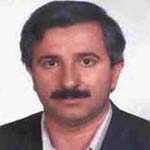A new Approach of Urban livability in Tehran: Thermal Comfort as a Primitive Condition to Enhance the Quality. Case study, District 22
The concept of urban livability is defined as the quality of life and wellbeing of urban residents. That is the interaction of people, environment and built environment. The residents can achieve happy life and well-being only when the nature surrounding them is happy and healthy. According to the range of welfare concept there is a spectrum of quantitative indicators that directly measure (human body temperature, heart rate, air temperature, wind speed ...) and qualitative indicators such as quality of life, pleasure and joy. The comfort and ease of environment are in the middle of the spectrum, in other words, the intrinsic concept of ambient comfort is environment. The inadequacy of natural environment will affect both indicators in the spectrum and lead to citizens' dissatisfaction and decline in social welfare and threaten the health of humans. Living in a salty marsh or very dry hot climate is never happy and satisfied. Accordingly, many concepts such as living quality, living environment, and quality of place, quality of life and sustainability are often used interchangeably with livability). This research is trying to weight the natural environment at least equal to the other two components of the sustainable development triangle. Among the components of natural environment, climate is playing the most important and significant role. Urban climate affects all aspects of city including building interiors, city architecture and open spaces. Thermal comfort of open spaces promote the social life and interrelations of residents. Therefore, in order to promote the social relations and economic activities especial consideration should be paid to open spaces. Accordingly, two types of data were measured for calculating the thermal comfort in the district 22. Subjective and objective evaluations which present qualitative and quantitative data. Objective data includes micrometeorological measurements with mobile instruments. Subjective data evaluated actual sensation vote or perception vote of thermal comfort by people using the urban open spaces. To this goal, questionnaires were prepared and scattered through space users simultaneously with micrometeorological measurements. Subjective data evaluated perceptual sensation vote of thermal comfort by people using the urban open spaces in three hot days of August 2018. Nine points are selected for site measuring and field survey which are representative of two types of urban open spaces in this research:1) Urban park and 2) street. Four cardinal points were chosen adjacent to the Shohadaye Khalije Fars Lake inside the park located in sidewalk pathway around the Lake. Other five points were selected in streets with different orientation and aspect ratio through the district. The physiologically equivalent temperature (PET), mean radiant temperature (Tmrt), sky view factor (SVF) and aspect ratio (H/W) are the most important indicators in this research which were calculated for evaluating comfort in the district. Results showed that urban open spaces in the district are discomfort and expose people to the extreme heat stress; over 40°C. This determines that, the natural environment especially around the Shohadaye Khalije Fars is not comfort. The questionnaire also indicated that people felt warm and dissatisfied. There is a high linear correlation between thermal comfort and mean radiant temperature and globe temperature. Therefore, it is concluded that thermal comfort in the district, is directly affected by urban areas. Also in the streets with low SVF and high aspect ratio, PET were calculated more comfortable than other streets. Point 5 at Naghibzade street, confirmed the effect of urban geometry on thermal comfort. Otherwise, the lack of tremendous trees for creating shade is visible especially around the lake. The high linear correlation between Tmrt and SVF around the lake confirmed the openness of the area and the high amount of solar radiation. Therefore, planting more trees for creating the shade effect is necessary. The perceptual analysis of thermal comfort indicated that by increasing of PET, people felt warmer. However, in a city like Tehran, people are more resistance to the heat stress. In addition, the characteristics of human body strongly depends on psychology and individual features and is a hard issue to predict. Otherwise, the people who felt warm were more than those felt slightly warm which indicates dissatisfaction of people. To be noticed that, thermal comfort of above 40 °C in summer is an alarm to urban planner and designers to rethink about climate consideration and global warming as a most important urban challenge in the district seriously. Besides, the consideration of thermal comfort and urban geometry should be imbedded into the comprehensive plan. This research proved that the climatic consideration for improving the quality of life and livability is important and urban designers and planners should rethink and review the comprehensive plan of Tehran to make a livable and sustainable city in the future.
- حق عضویت دریافتی صرف حمایت از نشریات عضو و نگهداری، تکمیل و توسعه مگیران میشود.
- پرداخت حق اشتراک و دانلود مقالات اجازه بازنشر آن در سایر رسانههای چاپی و دیجیتال را به کاربر نمیدهد.



